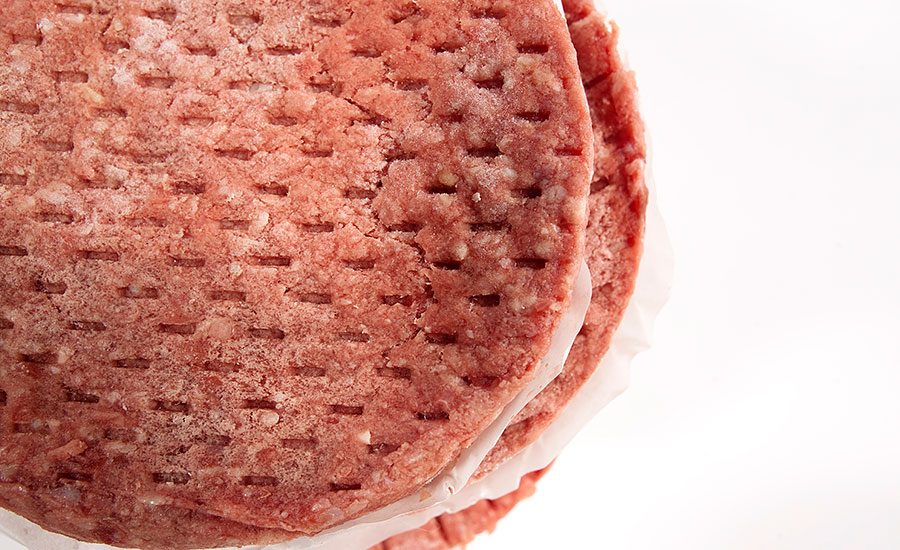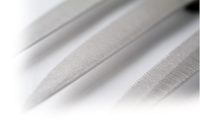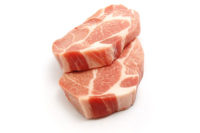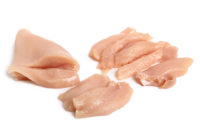You don’t have to be a meat scientist to know that in order to achieve a great cut of meat you must start with a great piece of meat. But having a great piece of meat doesn’t lead to a great cut without care.
One of the main challenges facing processors that perform manual trimming and cutting is maintaining a stable and skilled workforce to produce that quality cut.
“The No. 1 challenge is having trained and qualified personnel in your portion cutting operation,” says Danny Whitener, director of meat operations at Beaver Street Fisheries Inc., Jacksonville, Fla. “The challenge is hiring good, solid young people that you can train to do this particular work.”
Whitener’s company has found that the top way to bring in quality people is through referrals from personnel already employed in the facility. Training then becomes an ongoing, detailed, on-the-job process that lasts from three to five years.
Beaver Street Fisheries is fairly split between manual and automatic slicing. The company operates a 3D slicer, updated skinning machines and updated laser steak-cutting machines. Some employees are trained to be cutters, some are trained to operate slicing machinery and some are cross trained to be cutters and operate the equipment.
Beaver Street Fisheries’ portion-cutting operation is swaying slightly more toward automated cutting machines. “What really dictates that is our customer base and the type of product that we are selling,” Whitener says.
Beaver Street Fisheries also is using more completely trimmed product or upgraded trimmed product coming from the fabricators. Because the fabricators trim the meat at their plants, the company does not need to pay the cost of shipping fat across the country and is starting out with a cleaner product, Whitener says. While the meat is a more expensive product, Beaver Street Fisheries knows the benefit is a more consistent product.
“We can turn around orders quickly and more on-time deliveries, and we are not paying for trimmings, sliced fat, that we have no use for” Whitener says. “You decrease your labor, but, of course, it increases the cost of the product. With the studies we’ve done, we feel like overall we’re doing a better job with that type of product because we are giving the customer a more consistent, better product.”
Dealing with larger animal sizes also is becoming more challenging. For some of the primals, it is difficult to cut foodservice portions, especially for ribeye steaks. Jordan Dorfman, founder, president and chief executive officer at Chicago Meat Authority Inc., says the size of the animals that processors are dealing with are so much larger than they were 35 years ago when he entered the business.
“Customers who want say a 4-ouce pork chop or an 8-ounce boneless ribeye are dealing with issues around circumference being much larger, but thickness being much thinner for those same portion costs,” he says. “So if I’m an end user and I want to serve an 8-ounce ribeye, I actually want to cut that ribeye and have something on my fork if I’m a customer. Yet with the animals being 30 percent larger, I now have basically 70 percent of the thickness that I had 25 to 35 years ago. Animals are getting bigger. People’s perception of the cut they want to be (is) the same.”
Portion costs are the main driver for restaurant owners.
“He wants to serve 8 ounces because he is thinking about what it costs to put 8 ounces on a plate,” Dorfman says. “He says, ‘How will I satisfy my customer if I give him something that’s so thin that, A, it’s hard to cook and keep it juicy and flavorful, and B, when he gets it, you could read a newspaper through it.’”
The challenge for processors is finding smaller cuts that can be processed and still provide customers with desired results.
“We’re being forced to be super selective in terms of what we are able to bring in,” Dorfman says. “We’re forced to merchandise different cuts different ways. We’re forced to use more creative strategies to still give the customer what they want and meet a competitive price point, but we have a lot of larger-size meat to deal with.”
In turn, a smaller percentage of product is desired by the foodservice operator. Chicago Meat Authority, like many processors, pays more for raw materials that meet its specifications, because less of its specified product is available.
“We’re forced to talk to our customers about how we can modify their spec a bit so that we can all get to the desired outcomes,” Dorfman says. “We may take the tail and make the tail smaller so that we can cut it a little thick and still get in that thickness range, but then, of course, that typically raises the price. Then we have to deal with the customer being willing to pay a little more for it.”
In turn, yield has become even more important for processors.
“In the meat industry, it tends to be throughput and yield that are your drivers, but yield has become the most important thing — yield to meet desired end specifications,” Dorfman says.
Chicago Meat Authority has made seven-figure capital investments in automated steak cutting, and now uses machinery that has 360-degree scanning and analytics to cut to precise thickness. The machine is programmed to cut a particular portion of sub-primal to make a thick enough 8-ounce portion or cut a 10-ounce portion of the meat in milliseconds, Dorfman says.
“That’s the only way we’re able to get that meat to come out of the machine with the best economic result for the customer as well as for ourselves,” Dorfman says. “So, we’ve had to invest money on behalf of the customer, and it’s hard to get that back.”
Going forward, cutting is going to require creativity from quality processors to achieve consumers’ desired results.
“Our tagline at Chicago Meat Authority is ‘Your authority on quality meats,’” Dorfman says. “When we come to the table, we can bring this wisdom, this experience and this knowledge about what’s real as opposed to what is desired. We can create a solution, so we tend to think of ourselves as more solution sellers. Maybe you can’t do a ribeye anymore. Maybe there is a cut of meat that will get you exactly what you are looking for, but it may be cut from more of a value cut on that carcass … So it’s really solution selling centered around a desired end effect.”





Report Abusive Comment